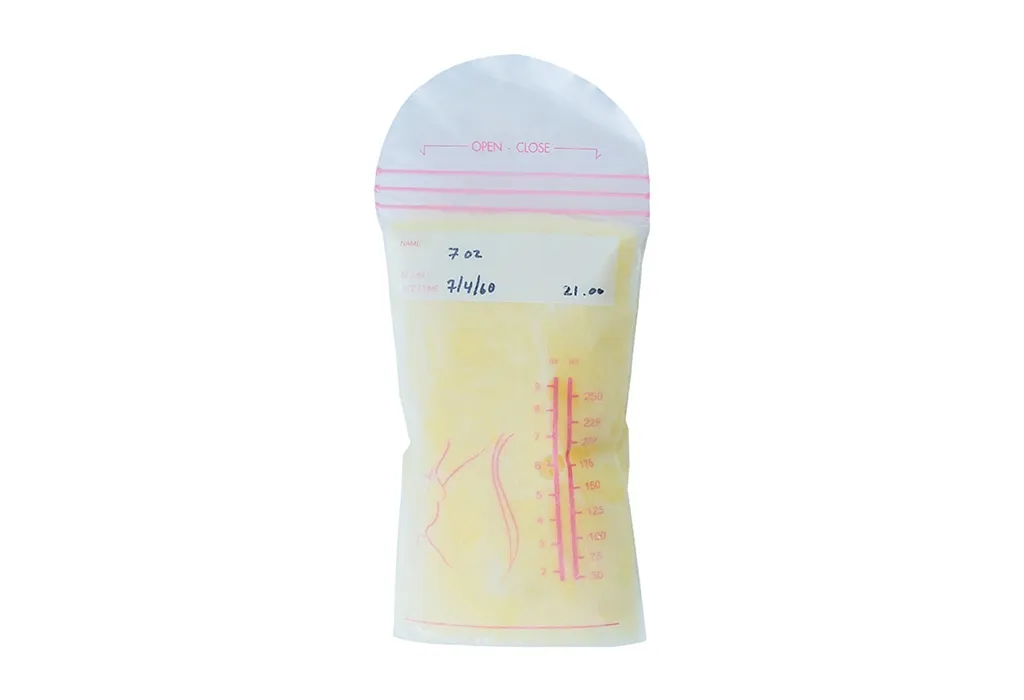The Mature Stage of Breast Milk While Breastfeeding
- What Is Mature Breast Milk?
- When Does Mature Milk Come In?
- How Does Mature Breast Milk Look Like?
- How Much Mature Milk Is Produced While Breastfeeding?
- What Does the Breast Milk Consist of?
- Does Mature Milk Change?
- For How Long Will You Continue to Make Mature Breast Milk?
Breast milk is the ideal source of nutrition for a baby up until he turns 6 months old. Breast milk provides a baby with complete nutrition as well as protect him from various infections, diseases, and illnesses. It Breastfeeding a baby helps both the mother and the child. But do you know about the three different stages? Perhaps not! Unknown to most, there are three stages of breast milk.
During the first stage, which begins during pregnancy and lasts until a couple of days after the birth of the baby, breast milk is known as colostrum. Colostrum is a thick yellow liquid, which is rich in antibodies and nutrients that are extremely important for a newborn. The second stage begins at around two days and lasts for about two weeks. The milk produced is referred to as transitional milk and is bluish-white. The last stage, which will be discussed in detail in this article, starts from about two weeks after delivery and is the final milk produced during the nursing period.
What Is Mature Breast Milk?
Mature milk is simply the milk that is produced in the third and final stage, i.e., it starts appearing near the end of the second week of childbirth. It is called mature breast milk. There are no further changes in breast milk once it reaches the final stage of maturity. Once the breast milk has matured, it is enriched with many antibodies and other essential components that can prevent bacterial and viral infections in your baby for as long as he or she is still consuming it.
When Does Mature Milk Come In?
Breast milk begins to mature around two weeks after delivery but reaches its final composition only after a baby is a month old. After this, the composition remains stable for as long as the baby is being breastfed. It changes only if a baby needs a bit of extra protection or nutrients.
How Does Mature Breast Milk Look Like?
Mature breast milk is usually yellow, bluish-white, or just white in colour. But the colour of breast milk can vary as it depends on the diet of the mother. If you’ve got sore or cracked nipples, the milk may even look pinkish or brownish if blood seeps into it. The consistency of mature breast milk is similar to that of skimmed milk, though some women do have creamier milk. Breast milk is known to separate when frozen, so you will notice that it forms layers and takes on a yellow tinge at this time.

How Much Mature Milk Is Produced While Breastfeeding?
When your breast milk transitions into mature breast milk, the amount of milk produced will be decided by your breastfeeding habits and your baby’s milk requirements. The more you breastfeed, the more you will make. Those who have twins or more will produce more milk since there will be more requirement. However, if a mother chooses to formula feed her baby along with breastfeeding, she will produce less milk. Pumping the mature breast milk can ensure that the supply lasts longer and more mature breast milk is produced.
As your baby grows, your baby will breastfeed more. This means that the amount of mature milk that you produce should also increase. Thus your baby’s age is another factor that plays an important part in determining how much breast milk is produced.
What Does the Breast Milk Consist of?
There are about 200 identified components including proteins, fats, enzymes, carbohydrates, minerals, vitamins in breast milk. There are a lot more that are not yet identified. Mainly, the breast milk comprises of everything a baby needs to grow strong and healthy. Mature milk contains nutrients, minerals, fats, proteins, carbohydrates, and vitamins. It also contains other components that help strengthen the immune system of a baby. Hence it is important to breastfeed a baby for at least 6 months. You can continue to breastfeed your baby for a year or two.
Does Mature Milk Change?
Although mature milk does not go through as many changes as it goes through in the first month after delivery, it will change depending on the baby’s needs. The components of mature milk generally remain stable, the consistency of milk can change during feeding time. The first milk that comes out during a session is thinner in consistency, but it can graduate to a creamier consistency after a while. The watery milk is known as foremilk while the creamier one is known as hindmilk.
The levels of protein, lactose, and fat are different in the morning and evening hours, so the mature milk can change a little depending on the time of day. The age of the child also decides the changes in mature milk. Your little one’s body will require different amounts of nutrients and vitamins month after month, and your mature milk will adjust accordingly.
For How Long Will You Continue to Make Mature Breast Milk?
Your mature milk will last for as long as you are breastfeeding your child, though if you get pregnant while you are still breastfeeding your previous child, your mature milk will slowly turn into colostrum the further along you go in your pregnancy, thereby stopping the flow of your mature milk.
Breastfeeding your child has many benefits that will not just help your child during the time of breastfeeding, but even later in life. Many women are often encouraged by their doctors or midwives to avoid bottle feeding and to continue breastfeeding the child for a whole year. The rules when it comes to producing milk for your baby is that your body will automatically produce exactly what your child needs, so unless there is a problem, your mature milk will provide excellent nutrition and will help your children to grow strong and develop well.
Also Read:
The Process of Making Breast Milk
Effective Tips to Increase Fat in Breast Milk
Difference Between Breast Milk and Formula
Difference Between Foremilk and Hindmilk
Was This Article Helpful?
Parenting is a huge responsibility, for you as a caregiver, but also for us as a parenting content platform. We understand that and take our responsibility of creating credible content seriously. FirstCry Parenting articles are written and published only after extensive research using factually sound references to deliver quality content that is accurate, validated by experts, and completely reliable. To understand how we go about creating content that is credible, read our editorial policy here.























